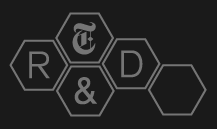Last night’s news about news orgs publishing directly to Facebook wasn’t a surprise, exactly — we’ve known this was in the works for months — but it’s been a good excuse to think about the permeable boundaries of modern digital media. Yes, you have a website, but it’s less a freestanding entity than a hub in a network, one that includes social networks, search engines, ad networks, APIs, and (oh yeah) the audience — itself a loosely joined compendium of individuals each with their own habits, desires, and behaviors. No news organization is an island, and navigating that mesh of relationships with skill and equilibrium is key to whatever future news is able to create for itself.
 Just as that discussion was ramping up, this video from last month’s FutureEverything conference was posted online. It’s a talk by Alexis Lloyd and Matt Boggie of The New York Times’ R&D Lab, and it hits on a lot of the same themes — a vision of a news outlet that isn’t self-segregated from the rest of the world. Here’s the summary:
Just as that discussion was ramping up, this video from last month’s FutureEverything conference was posted online. It’s a talk by Alexis Lloyd and Matt Boggie of The New York Times’ R&D Lab, and it hits on a lot of the same themes — a vision of a news outlet that isn’t self-segregated from the rest of the world. Here’s the summary:
From New York Times R&D Labs, Alexis Lloyd and Matt Boggie talk about our possible media futures, following the early days of the web — where growth was propelled forward by those making their own spaces online — to the present, where social platforms are starting to close down, tightening the possibilities whilst our dependency on them is increasing. Explaining how internet users are in fact participatory creators, not just consumers, Alexis and Matt ask where playing with news media can allow for a new means of expression and commentary by audiences.
A good companion piece to that video is this other one of an Alexis Lloyd talk at The New School’s Journalism+Design program a couple weeks ago: “an overview of a bunch of our recent projects and then took a deeper dive into some of the design values and research that form the conceptual foundations for those projects.”
Leave a comment